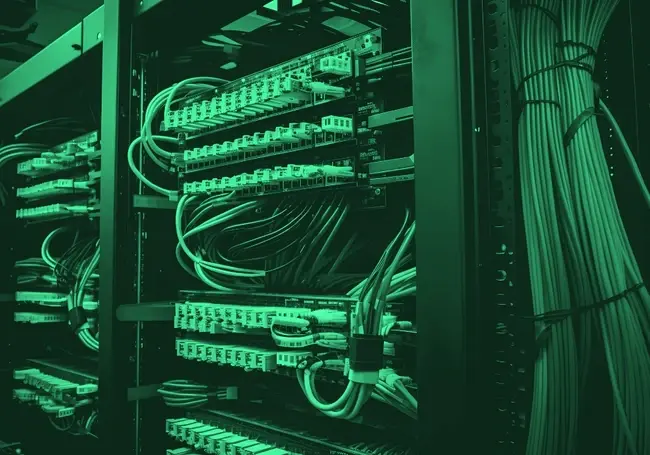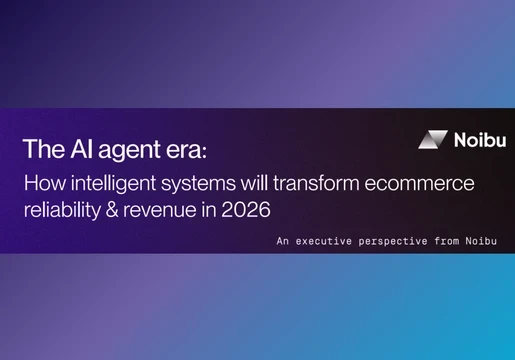The data center industry is booming. The increasing popularity of cloud services, paired with the explosion of computing-hungry technologies like generative AI and large language models (LLMs), has made the demand for data centres higher than ever before.
A vivid example of this surging demand can be seen with the chip maker Nvidia, whose graphics processing units currently power the vast majority of AI applications. The tech giant is expected to deliver 100,000 AI server platforms this year, but total units shipped could surge to 1.5 million by 2027.
With demand for data centers predicted to reach as much as double the demand for 2022 by next year, it has become clear that simply building more data centers will soon no longer be enough to match modern technology demands.
Instead, data centers need to become more efficient and less power-hungry. One way this goal can be achieved is through Data Center Infrastructure Management (DCIM), which can help data center providers ensure their data centers are performing optimally.
This article delves deep into DCIM, exploring what it is, how it works, and why it is becoming so important as we enter the data center golden age.

What is Data Center Infrastructure Management (DCIM)?
Data Center Infrastructure Management (DCIM) refers to the practice and tools used to manage the physical infrastructure of a data center.
DCIM tools monitor, measure and optimtise the the physical resources that keep data centers running smoothly. This helps analyze resource utilization and plan for future growth, allowing you to see where you have available space and power, and identify potential bottlenecks.

DCIM also creates a detailed inventory of all your data center assets, including their location, configuration, and maintenance history, and automates routine tasks like provisioning new equipment, generating reports, and sending alerts for potential issues.
Many DCIM tools can track the status of physical assets like servers, power systems, cooling units, and network equipment too, including real-time monitoring of environmental factors like temperature and humidity.
By proactively monitoring and managing infrastructure, this can help prevent equipment failures and minimize downtime, ultimately making your data center more efficient
How does DCIM work?
DCIM works by continuously collecting data on various aspects of the data center, analyzing it for insights, and taking automated actions or providing recommendations to optimize resource utilization, prevent problems, and ensure efficient and reliable data center operations.
This process can be split into a number of components, including:
1. Data Collection
In DCIM, Sensors are placed throughout the data center to collect real-time data on various parameters. This includes data for:
- Power consumption of servers and other equipment.
- Temperature and humidity levels within the data center.
- Airflow and cooling system performance.
- Status of power distribution units and other infrastructure components.
2. Data Analysis and Visualization.
DCIM tools act as a central repository for all the collected data. It analyzes this data to provide insights into:
- Resource utilization of power, cooling, and space.
- Potential bottlenecks and areas for optimization.
- Trends in energy consumption and environmental conditions.
DCIM software also offers various visualization tools like dashboards, charts, and maps to present data in an easily understandable format. This allows data center managers to quickly identify trends and potential issues.
3. Automation and Control
DCIM sets thresholds for critical parameters and triggers alerts when conditions deviate from normal. This allows for early detection of potential problems like overheating or power outages.
DCIM can also automate certain tasks based on predefined rules. These rules include adjusting cooling fan speeds based on temperature readings, sending power notifications in case of irregularities or generating reports on resource utilization and environmental conditions, to name a few.
4. Integration and Collaboration
DCIM can integrate with other IT management tools like CMDB (Configuration Management Database) and BMS (Building Management System) for a holistic view of the data center environment.
It also provides a platform for IT and facilities teams to share information, track changes, and collaborate on managing the data center infrastructure.
Why is DCIM important?
Data centers are becoming increasingly complex with more interconnected equipment and ever-growing demands. Managing this complexity manually is inefficient and prone to errors, and DCIM provides a centralized platform to monitor and manage all aspects of the infrastructure, making it crucial to offer a holistic view for informed decision-making.
DCIM also helps optimize resource utilization, leading to reduced energy consumption, lower cooling costs, and overall improved operational efficiency. Real-time monitoring of equipment health and environmental conditions allows for early detection of potential problems.
This proactive approach minimizes downtime and ensures higher data center availability, preventing costly disruptions and productivity losses.
By optimizing energy usage and reducing waste, DCIM plays a crucial role in promoting more sustainable data center practices too.
This is increasingly important as environmental concerns become more prominent and sustainability becomes more than just a buzzword in the data center world.
What are the benefits of DCIM?
Implementing DCIM offers a range of benefits for data centre management, making them crucial to meeting future computing demands as technology becomes more advanced.
Here are some of the most notable benefits of DCIM:
1. Increased Efficiency
DCIM provides a real-time and comprehensive view of resource utilization across the entire data center. This includes power consumption, cooling capacity, and space usage at the rack, server, and even component level. With this granular data, you can identify areas where resources are underutilized or overprovisioned.
By understanding resource utilization trends, you can also optimize capacity allocation, allowing you to avoid over-provisioning power and cooling, reduce energy waste and cut unnecessary costs. You can also identify opportunities for server consolidation or virtualization, maximizing the use of existing resources.
Many DCIM tools automate power-saving features like server virtualization and power down during off-peak hours too. This ensures efficient power usage and reduces overall energy consumption.
2. Improved Reliability
DCIM tools continuously monitor the physical infrastructure of data centers to prevent downtimes and improve reliability. They monitor:
- Equipment health: Temperature, power consumption, fan speeds, and other vital signs of equipment health.
- Environmental conditions: Temperature, humidity, air pressure, and other factors that can impact equipment performance.
DCIM also helps plan and schedule preventive maintenance based on equipment health data and manufacturer recommendations, reducing the risk of unexpected failures and extends the lifespan of equipment.
By identifying potential bottlenecks and underutilized resources, DCIM allows you to optimize cooling systems, power distribution, and overall infrastructure design. This reduces stress on individual components and prevents cascading failures caused by overloads.
3. Better Planning
DCIM provides real-time and comprehensive data on resource utilization across the entire data center. This includes power consumption, cooling capacity, and space usage at the rack, server, and even component level. This granular data allows you to accurately assess current capacity and identify areas where resources are under-utilized or over-provisioned.
Many DCIM solutions also offer scenario modelling capabilities. You can simulate different scenarios like adding new equipment, changing configurations, or experiencing power outages to assess their impact on the data center infrastructure.
4. Cost Savings
Optimized resource utilization through DCIM leads to lower energy costs and more sustainable data center operations by preventing centers from over-provisioning power and cooling capacity.
At the same time, proactive maintenance through DCIM reduces the risk of failures, which translates to less downtime and in turn less costs associated with lost productivity and service disruptions. DCIM continuously monitors equipment health and environmental conditions, allowing for early detection of potential issues. This proactive prevents equipment failures and unplanned outages, which can be extremely costly due to lost productivity and service disruptions.
DCIM also streamlines asset tracking, reduces maintenance needs, and helps optimize equipment utilization, providing a centralized and detailed inventory of all data center assets, including their location, configuration, and maintenance history. This streamlines asset tracking, reduces the risk of misplaced equipment, and streamlines maintenance planning.
5. Compliance and reporting
DCIM software gathers comprehensive data on all aspects of the data center infrastructure and stores it within a central repository. This centralized data provides a clear audit trail for compliance purposes, allowing you allows you to easily track changes made to the infrastructure, identify potential issues, and demonstrate adherence to relevant regulations.
Read: What is a Compliance Management System?
For reporting, DCIM software can automate the generation of detailed reports on various aspects of the data center, from energy consumption and efficient metrics to capacity utilization of power, cooling and space. These automated reports provide valuable insights for demonstrating compliance with regulations related to energy efficiency, data security, and environmental impact.
They also simplify the process of generating reports for internal stakeholders or external auditors, offering pre-built reports relevant to different compliance requirements.
Final thoughts
Data Center Infrastructure Management (DCIM) has become an essential tool for ensuring efficient, reliable, and cost-effective data center operations. It empowers data center managers to gain a holistic view of their infrastructure, optimize resource allocation, automate processes, and proactively address potential issues.
As data centers become increasingly complex and critical to business operations, DCIM will continue to be become an indispensable tool for keeping them running smoothly.







Comments ( 0 )